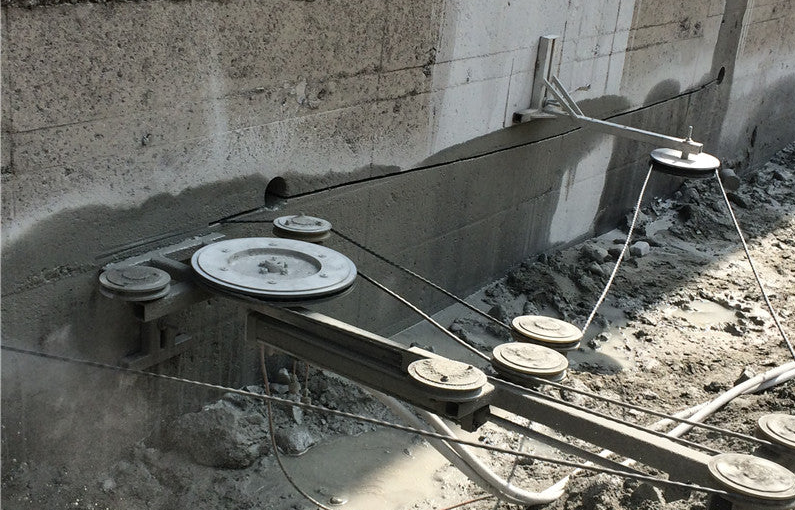Concrete Wire Sawing: The Process, Benefits, and A Step-By-Step Guide
Concrete wire sawing, a method that’s both innovative and highly efficient, has revolutionized the construction industry. Whether it’s for handling large-scale demolition work or intricate modifications to existing structures, this approach offers unparalleled precision and flexibility. But how is concrete wire sawing done, why is it beneficial, and what steps are involved? Let’s delve in.

What is Concrete Wire Sawing?
Concrete wire sawing is a method that involves the use of a diamond-embedded wire saw to cut through concrete and other robust materials. This technology is excellent for making precise cuts in large sections of concrete, especially when other cutting methods are impractical due to space limitations or structural considerations.
Why is Concrete Wire Sawing Done?
Concrete wire sawing is done for several reasons:
- Complex Cuts: Wire saws can make intricate and complex cuts that would be challenging with other cutting methods.
- Limited Access: The technique is perfect for situations where access is restricted or when vibration and noise must be kept to a minimum.
- Thickness: Wire saws can cut through virtually any thickness of concrete, making them excellent for heavy-duty projects.
Benefits of Concrete Wire Sawing
Concrete wire sawing has several key benefits:
- Versatility: The process can be used to cut through various materials, including reinforced concrete, steel, and metal.
- Precision: It offers a high degree of accuracy, allowing for precision cuts even in complex structures.
- Environmentally Friendly: Wire sawing produces less dust and waste compared to other cutting methods, reducing its environmental impact.
A Step-By-Step Guide to Concrete Wire Sawing
Step 1: Safety Precautions
Safety should always come first. Ensure that all operators are wearing protective clothing, safety glasses, gloves, and steel-toed boots. The area should also be cordoned off to keep non-essential personnel at a safe distance.
Step 2: Setup
The diamond wire saw is set up on the desired section of the concrete. The saw’s pulley system should be adjusted to ensure the wire fits tightly around the concrete piece to be cut.
Step 3: Cutting
The wire saw is then activated, and the operator gradually increases the cutting speed until the wire begins to cut through the concrete. The process uses a constant stream of water to cool the wire and suppress dust.
Step 4: Monitoring
The operator closely monitors the process, making adjustments to the sawing speed and tension as necessary to ensure a smooth and consistent cut.
Step 5: Completion
Once the cut is completed, the wire saw is carefully removed, and the newly cut piece of concrete is safely extracted from the work area.
Step 6: Clean-Up
The work area should be cleaned of debris and any remaining water from the cutting process.
Final Thoughts
While concrete wire sawing can be an excellent solution for complex and challenging cuts, it requires a high level of skill and expertise to be carried out safely and efficiently. It’s always recommended to employ professional services for such tasks. Northern Concrete Cutting, for example, offers expert wire sawing services, guaranteeing precision, safety, and satisfaction.

Write a Comment